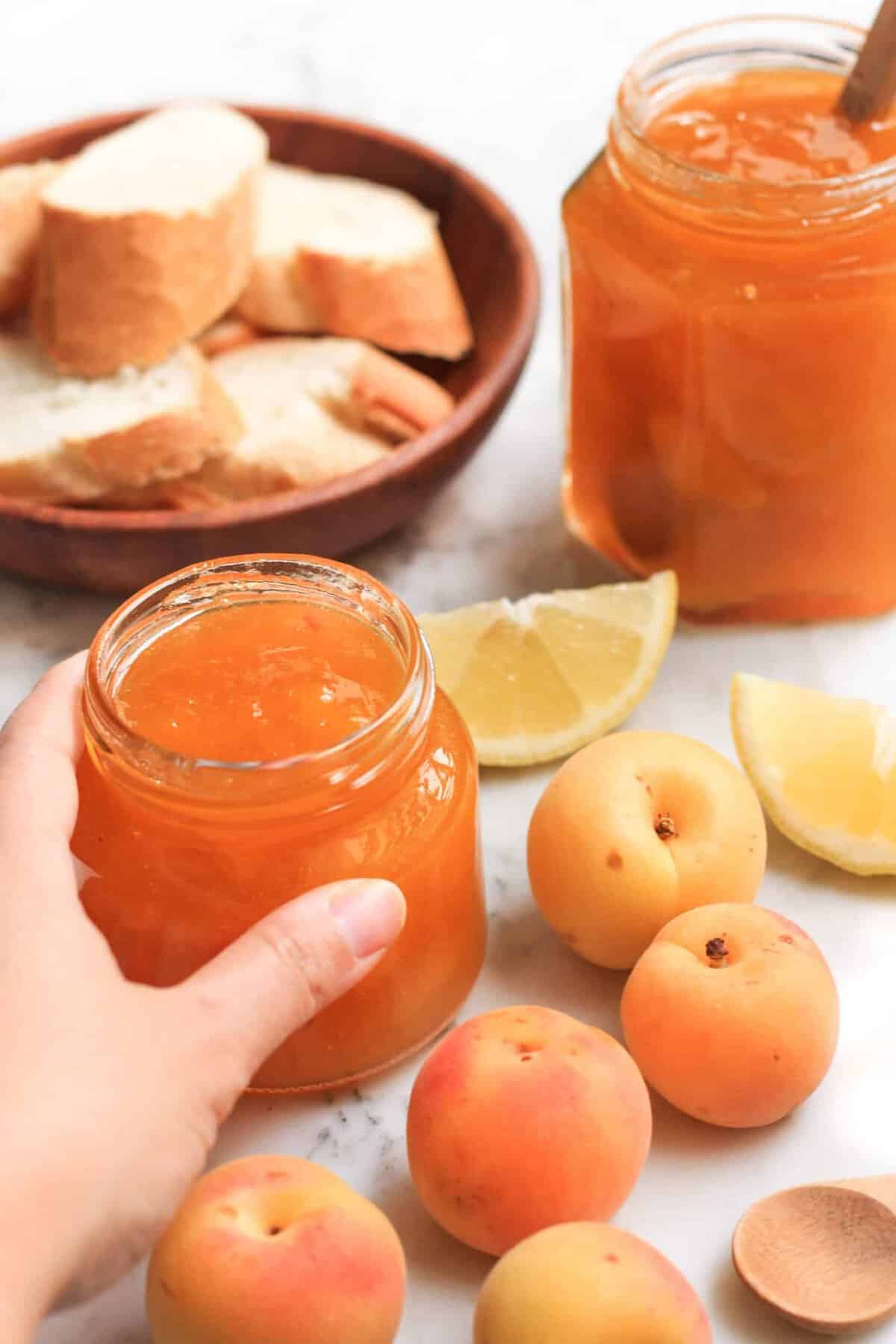Wholesome Family Fun with Apricot Jam Recipes
Welcome to our cozy corner of the web, dear parents and guardians! Are you ready to spread some joy on your family’s breakfast table with some homemade apricot jam? If you’re nodding yes, then you’ve landed in the perfect spot. Here, we’ll embark on a delightful culinary journey, whipping up apricot jam recipes that are sure to become a new staple in your household.
Why Apricot Jam is a Must-Try for Your Family
Apricot jam isn’t just delicious—it’s also packed with a bounty of benefits. This golden preserve is brimming with vitamins, minerals, and antioxidants, making it a nutritious choice for your loved ones. And the best part? It’s super easy to make! So, gather your little helpers around the kitchen, roll up your sleeves, and get ready to cook up some apricot magic.
Choosing the Right Apricots for Your Jam
Before we dive into the recipes, let’s talk apricots. For the best jam, you’ll want to select ripe, juicy apricots. They should be soft to the touch but not mushy, with a vibrant orange hue and a sweet fragrance. If apricots are out of season, don’t fret—frozen apricots can also make a delicious jam. Just be sure to thaw them properly before you begin!
Gathering Your Jam-Making Essentials
Here is a checklist of the necessary tools and ingredients to kickstart your apricot jam-making adventure:
- Ripe apricots
- Granulated sugar or your preferred sweetener
- Fresh lemon juice
- Water
- Large pot or saucepan
- Wooden spoon or silicone spatula
- Clean jars and lids for storing your jam
- Ladle or funnel for transferring the jam
Note: Exact quantities will be provided in our scrumptious recipes below.
First Recipe: Classic Apricot Jam
Let’s kick things off with a classic—that old-fashioned apricot jam recipe your family will relish. Here’s a simple guide to creating a traditional spread that tastes like it’s been made with love.
- Start by preparing your apricots. Wash them thoroughly, halve them, and remove the pits.
- Chop the apricot halves into smaller pieces or mash them slightly for a rustic texture.
- In a large pot, combine the apricots with granulated sugar and a splash of lemon juice. The lemon juice not only adds a pleasant zesty flavor but also helps in setting the jam thanks to its natural pectin.
- Stir the mixture over medium heat until the sugar has completely dissolved.
- Once the sugar is dissolved, increase the heat and bring the jam to a boil. Stir frequently to prevent sticking and to ensure even cooking.
But wait, there’s more! Keep stirring the bubbling pot of golden goodness to find out how this apricot jam turns into a beautiful preserve that your family will request time and time again. Stay with us as we reveal the next steps and further tips for perfecting your jam in our follow-up sections!

Five Things Parents Should Know When Preparing Apricot Jam
As the sweet aroma of apricot jam starts to fill the kitchen, let’s ensure your jam-making session goes off without a hitch. Here are five essential tips that all parents should be mindful of:
1. The Importance of Sterilization
The process of jam-making is not only about cooking up a tasty treat but also about preserving. To ensure your jam stays fresh as long as possible, having sterilized jars is crucial. You can sterilize jars easily by boiling them in water for 10 minutes or placing them in an oven at 200 degrees Fahrenheit for about 20 minutes.
2. Balancing Sweetness and Tartness
Each family’s taste buds are delightfully unique. When making apricot jam, try balancing sugar with the natural tartness of the apricots. Feel free to adjust the sugar levels to your family’s preference, or consider healthier alternatives such as honey or maple syrup for a twist on tradition.
3. The Saucer Test
Wondering if the jam has reached the perfect consistency? The saucer test is an old-school trick that’s gold. Simply place a saucer in the freezer for a few minutes. Drop some hot jam onto the cold saucer, and if it wrinkles when pushed with your finger, it’s done. It’s a magical moment that’ll make you feel like a culinary wizard and is a great little experiment to show the kids!
4. Be Mindful of Pectin Levels
Apricots are moderate in pectin, the natural gelling agent that helps jam set. Adding lemon juice, which is rich in pectin, helps the jam reach the desired consistency. However, if your jam still doesn’t set, consider using a dedicated pectin product available in stores.
5. Getting Kids Involved Safely
Jam-making is a fantastically fun family activity, but it’s imperative to keep safety first, especially with hot stoves and liquids. Assign them tasks such as measuring sugar, washing fruits, or even designing labels for the jam jars. This ensures they’re involved without being near the bubbling pot.
Storage and Preservation
Once your jam is ready and has passed all the tests, it’s time to store it correctly. Pour the hot jam into your sterilized jars, leaving about a quarter inch of space at the top. Seal them while they’re hot, and as they cool, you should hear the satisfying ‘pop’ of the vacuum seal forming. Your delectable homemade apricot jam can be stored in a cool, dark place and, once opened, should be refrigerated.
Feel inspired yet? There’s something truly heartwarming about sharing homemade preserves with your family. It’s not only a jar of jam; it’s a jar full of memories and love that you’ve all created together.
So, dear parents, with apricots in hand and little ones by your side, prepare to embark on a jam-making adventure. Embrace the mess, enjoy the process, and bask in the glow of accomplishment every time you spread your homemade apricot jam on a warm piece of toast. Let’s make some jam!
For more great articles please see here. For more information see here
Disclaimer
The articles available via our website provide general information only and we strongly urge readers to exercise caution and conduct their own thorough research and fact-checking. The information presented should not be taken as absolute truth, and, to the maximum extent permitted by law, we will not be held liable for any inaccuracies or errors in the content. It is essential for individuals to independently verify and validate the information before making any decisions or taking any actions based on the articles.




